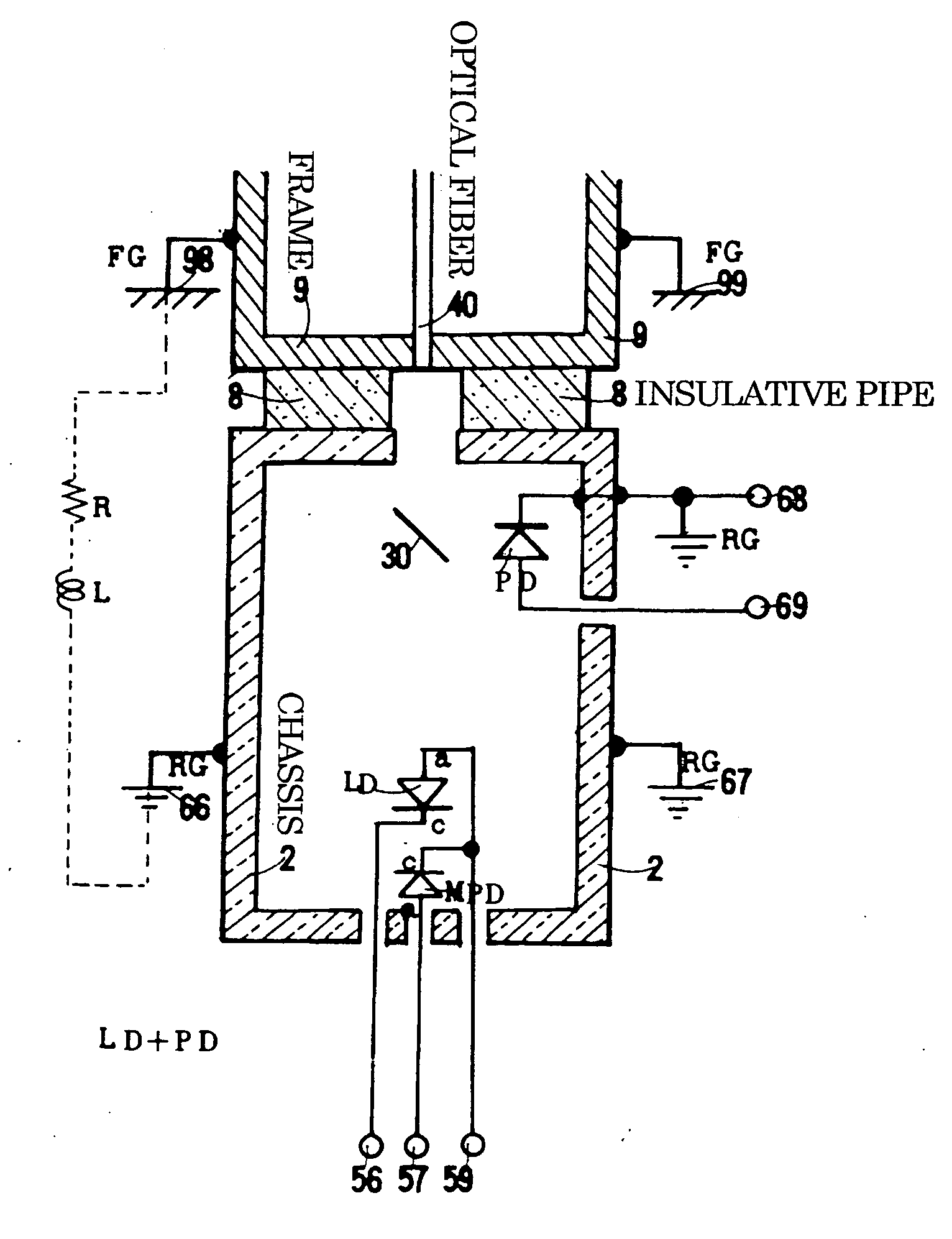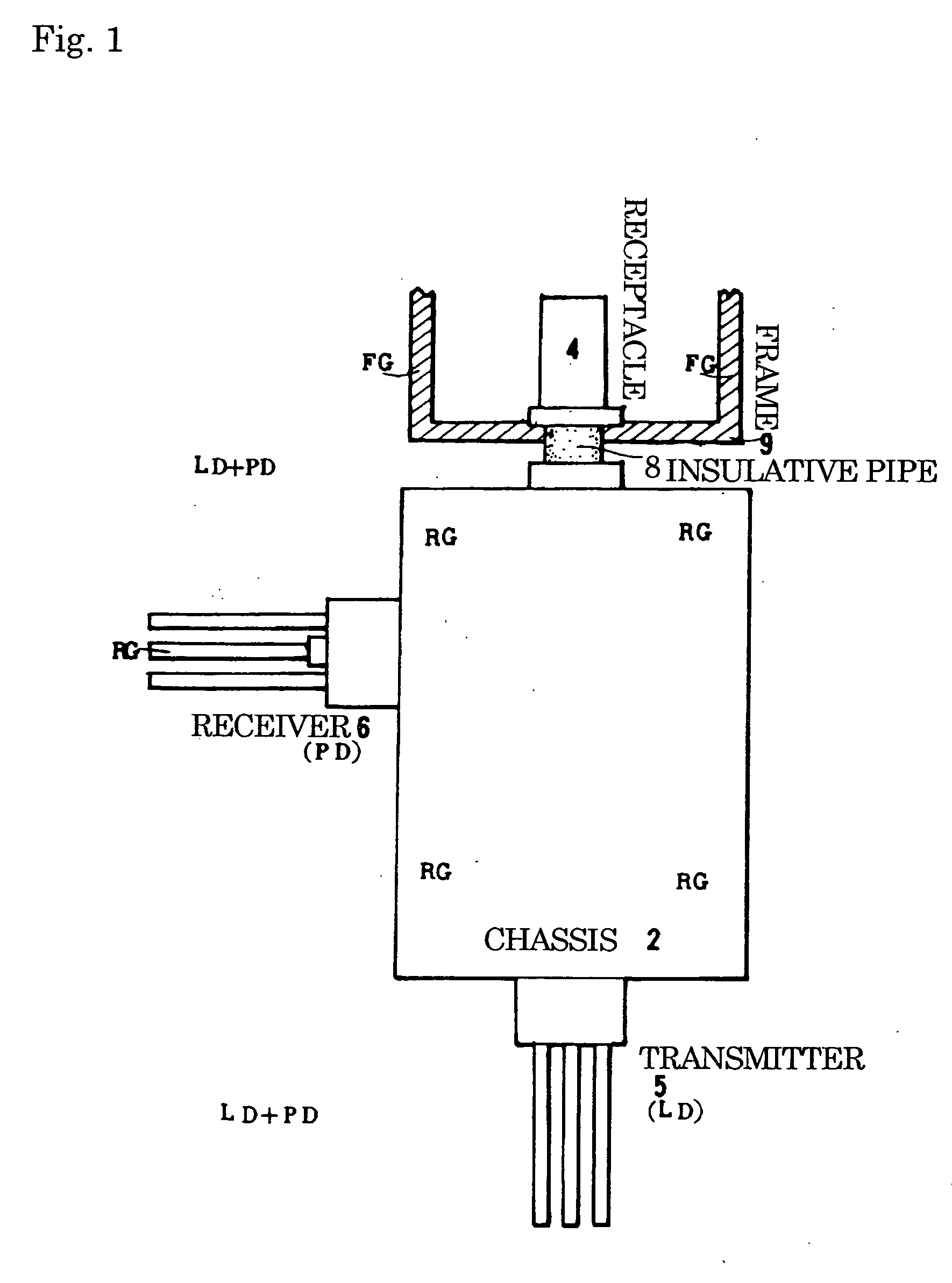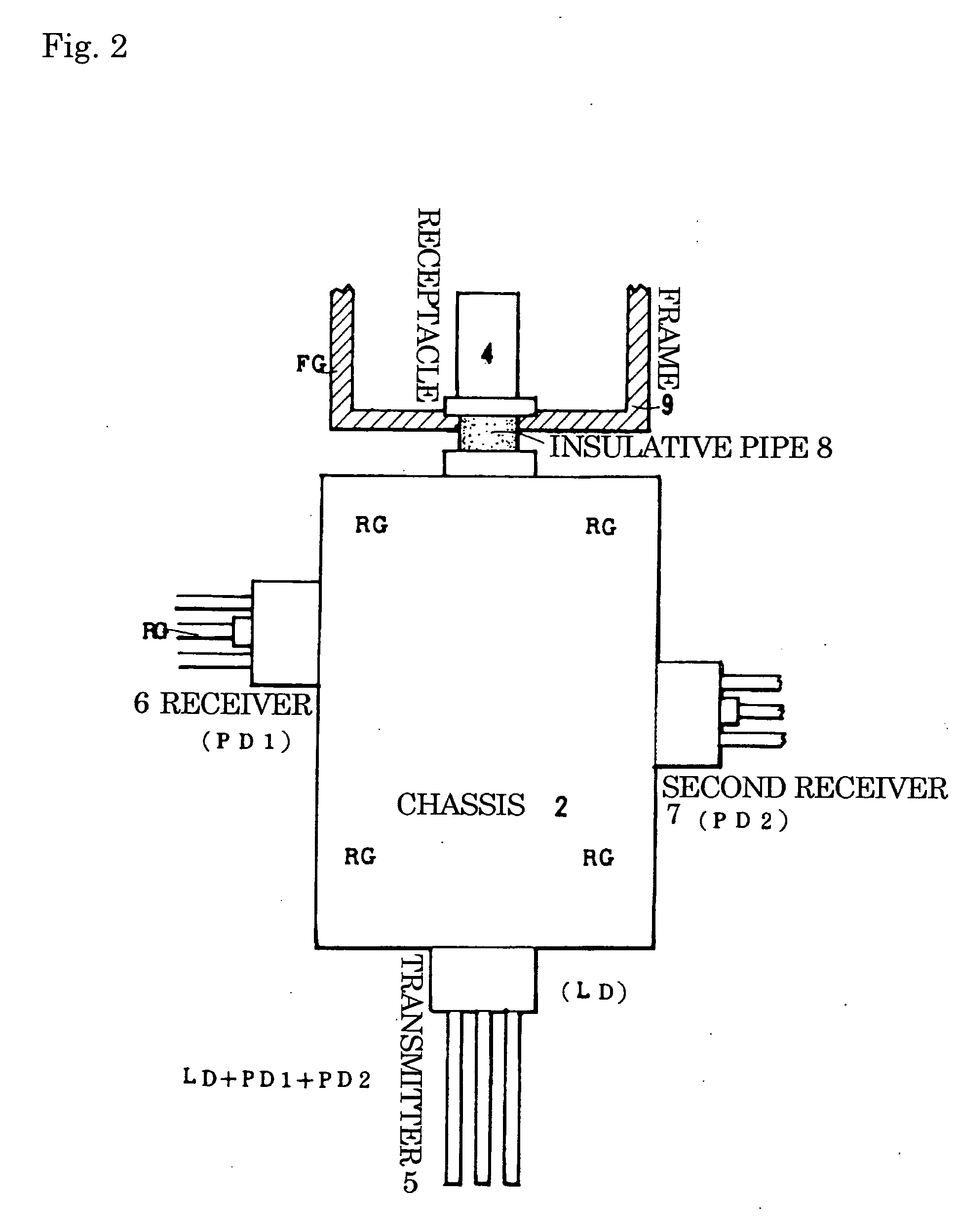Single fiber bidirectional optical module and single fiber bidirectional optical transmission and receiver device
a single fiber bidirectional optical module and bidirectional optical transmission technology, applied in the field of single fiber bidirectional optical modules and single fiber bidirectional optical transmission and receiver devices, can solve the problem that the module does not always include a single receiver, and achieve the effect of reducing electrical crosstalk
- Summary
- Abstract
- Description
- Claims
- Application Information
AI Technical Summary
Benefits of technology
Problems solved by technology
Method used
Image
Examples
Embodiment Construction
[0044] Embodiment 1: FIG. 7 is a front view of the exterior of a bidirectional optical module according to an embodiment of the present invention. FIG. 8 is a longitudinal sectional view of the optical module. In the optical module, a transmitter 5 including a laser diode (LD) and a monitor photodiode (MPD) is provided at a lower part of the optical module, and a receiver 6 including a photodiode (PD) is provided at the right side of the optical module. Further, a receptacle 4 is provided at an upper part of the optical module, and a wavelength selective filter 30 is provided between the receptacle 4 and the transmitter 5. The figures illustrate the state in which an optical fiber 40 is not inserted in the receptacle 4. To transmit an optical signal, a ferrule provided at the leading end of the optical fiber 40 is inserted in the receptacle 4 to optically couple the optical fiber 40 to the LD and the PD.
[0045] To electrically insulate the receptacle 4 from a metal chassis 2, a cyli...
PUM
 Login to View More
Login to View More Abstract
Description
Claims
Application Information
 Login to View More
Login to View More - R&D
- Intellectual Property
- Life Sciences
- Materials
- Tech Scout
- Unparalleled Data Quality
- Higher Quality Content
- 60% Fewer Hallucinations
Browse by: Latest US Patents, China's latest patents, Technical Efficacy Thesaurus, Application Domain, Technology Topic, Popular Technical Reports.
© 2025 PatSnap. All rights reserved.Legal|Privacy policy|Modern Slavery Act Transparency Statement|Sitemap|About US| Contact US: help@patsnap.com



